
Saltwater Studies in South Florida was founded by education entrepreneur Christa Jewett. It is among the growing number of a la carte providers in Florida made possible by the state's education savings account programs.
Every state’s public education system is a market with supply (i.e., instruction) and demand (i.e., students needing instruction). These markets function as the operating systems for public education. Unfortunately, since the mid-1800s, these markets have been poorly designed and managed. As a result, every state’s public education operating system is deeply flawed.
Just as digital applications fail when their underlying operating systems malfunction, public education programs fail when the market mechanisms beneath them are ineffective. This helps explain why nearly every major reform initiative since "A Nation at Risk" (1983), from site-based decision-making and outcome-based education to teacher empowerment and regulatory accountability, has failed to deliver sustained, systemic improvement.
Public education will not realize sustainable improvement until each state’s public education market becomes more effective and efficient.
Public education’s primary problem is that the supply side of each state’s market is dominated by a government monopoly that also controls most demand side funding. A necessary correction is giving families greater control over a significant portion of the public funds allocated for their student’s education. Thanks to decades of advocacy by the education choice movement, families in 18 states may now use public funds to purchase education services and products from government and nongovernment providers.
But family-controlled funding alone is not enough. Every aspect of the design and management of public education markets must be improved, not just their demand side.
In high-performing markets, supply and demand are in sync; transactions are easy, and transactional costs low; information to guide decision making is transparent and accessible; resource allocation is effective and efficient; risks are managed appropriately, and customer satisfaction is consistently high.
The education choice movement has historically focused on increasing the number of families who control a portion of their students’ education funding while putting less emphasis on ensuring the market’s supply side grows in tandem. This imbalance often causes demand to exceed supply, driving up costs without improving quality and leaving families unable to access the best educational environments for each child. A recent study in Florida found that 41,000 students were awarded education choice scholarships last year but never used them, in part because there was no space in their desired schools.
Policymakers can help by enacting policies that better align supply with demand, ensuring students have access to the options they need.
During the 2025-26 school year, families nationally will spend about $6.75 billion in public funds customizing their children’s education. Emerging Artificial Intelligence tools are already showing promise in streamlining compliance, verifying transactions in real time, and safeguarding public dollars. By adopting these technologies wisely, states can protect taxpayers while reducing bureaucratic burdens on families and providers.
Families shape public education markets through their purchasing decisions. When those decisions are well-informed, they drive higher quality and better prices. Yet in every state, families lack easy access to reliable information about provider performance and pricing. To support better choices, states should create user-friendly tools that provide transparent, trustworthy information. Without this transparency, families are navigating markets in the dark.
Every market decision carries risks and consumes resources. For example, when states implement policies that drive high demand without growing supply, costs rise, and families lose access to the best options for their children. Effective markets require careful regulation and risk management to balance innovation with accountability while ensuring resources are allocated efficiently.
States are responsible for the design, implementation, and ongoing management of public education markets. Their goal should be market optimization, with family satisfaction as the ultimate indicator of success. An optimized market is one where all components function well together, and widespread family satisfaction suggests that children’s needs are consistently being met.
Public education markets are interdependent ecosystems and must be managed as such. When states align supply and demand, reduce friction, expand transparency, and manage risk wisely, they create conditions where every family can access instruction tailored to their child’s needs.
Lasting improvement will not come from the next reform fad. It will come from building healthy markets that empower families and unlock the full potential of every student.
An education reform era policy ended recently as New York lawmakers repealed a law that attempted to remove ineffective instructors from public school classrooms. As Kathleen Moore of the Times Union explained:
Districts can still fire probationary employees, as always. The measures that help them remove ineffective teachers who have tenure, however, have been removed. Repealed were measures that called for an expedited hearing for “just cause” termination and stated that reviews showing a pattern of ineffective teaching would be “very significant evidence” in favor of termination.
In addition, teacher evaluations will no longer have to consider test scores, student growth scores and other measures that the state tried to use from 2010 until when the pandemic hit in 2020.
If you have been hanging around the ed reform water cooler long enough, you will recall when New York City “rubber rooms” were a cause celebre back in 2009. Job security for tenured teachers reached such absurdity that NYC schools would send instructors accused of criminal activity to “rubber rooms” in order to keep students safe. Mind you these people continued to draw their salary and benefits while doing absolutely nothing. Rubber rooms existed because it was almost impossible to fire a tenured teacher.
State lawmakers attempted to address this with a statewide evaluation policy that could-in theory- allow school administrators to remove tenured teachers for ineffective instruction. In theory this could have a large impact on average student achievement based upon research such as this chart from a 2006 Brookings Institution study:
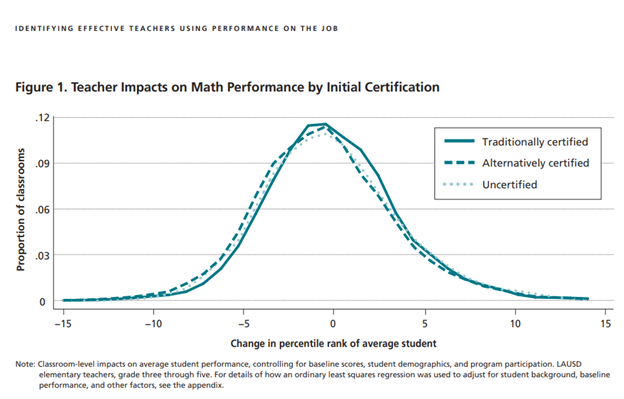
The upshot: Research shows that some teachers are catastrophically poor at getting students to learn (left side of the bell curve) while others are amazing (right side of the bell curve). Obviously what state lawmakers should do is to create a statewide evaluation system to remove the teachers on the left side, and average teacher quality will improve- in theory. As the Times Union article noted, New York had a policy to do just this in theory between 2010 and 2020. Let us then see what happened in New York NAEP scores in practice between 2009 (pre-policy) and 2019 (last NAEP under the policy and before COVID).
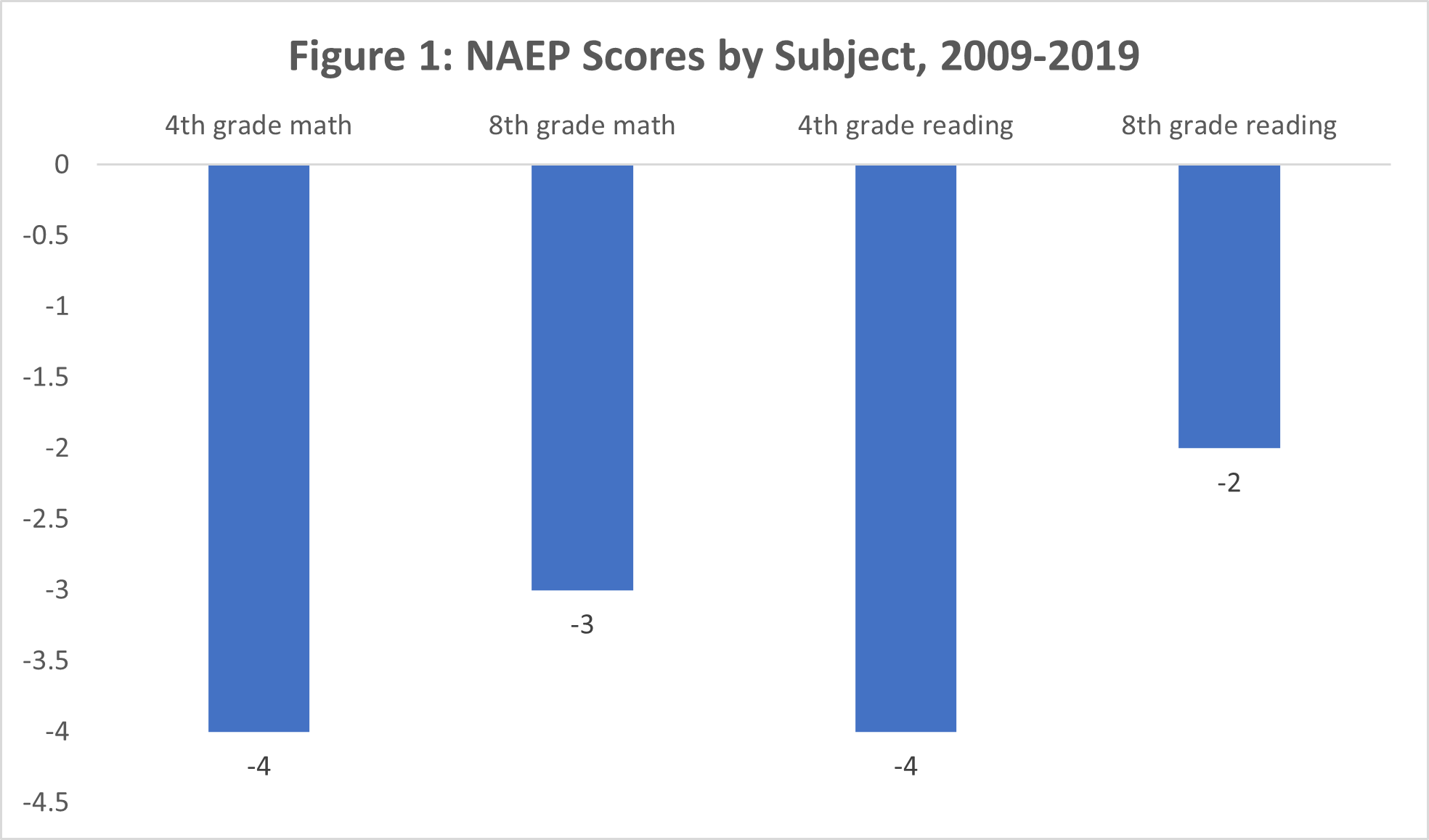
Of course, this does not mean that the New York teacher evaluation policy caused New York NAEP scores to decline. It does however mean that the hoped for large improvement in instruction failed to materialize. I don’t know of any data source to confirm or deny this, but I’d be willing to bet a left toe that very few teachers were removed under the policy.
Despite all the Sturm und Drang surrounding this policy at the time, it limped along ineffectually for a decade or so before repeal effectively never being implemented. It’s almost as if school districts have been subject to a deep level of regulatory capture by reactionaries with abundant ability to engage in passive resistance. Reformers bringing technocracy to a politics fight brings to mind Macbeth:
Life's but a walking shadow, a poor player,
That struts and frets his hour upon the stage,
And then is heard no more. It is a tale
Told by an idiot, full of sound and fury,
Signifying nothing.
It also stands as a great example of Dennis Nedry attempting to get the dinosaur to fetch the stick. Education reform policies require active constituencies in order to work and last. If the supporters of top-down policies recognize this need, they have yet to display much ability to acquire them.
The nation’s first charter school law passed in 1991, the year after an improbably left-right coalition enacted the nation’s first modern school voucher program.
Ever since, charters have been the go-to “third way” solution: More regulated than private schools. More flexible than district-run public schools. Accountable to the public in more ways than either. And, crucially, amenable to worldviews of Democrats and Republicans.
But that may be starting to change.
Support for independently run public schools has eroded among elected Democrats. In a break from his predecessors in both parties, President Biden declined to issue a pro-charter proclamation and proposed cutting or restricting programs that support their growth.
And private education scholarships are sweeping the country: 18 states and counting have enacted education savings accounts or a similar mechanism allowing parents to direct public education funding to schools and providers of their choice. Growing numbers of large states like Ohio are opening private school voucher programs to all students. It’s clear this is where Republicans' education policy enthusiasm lies.
All of this has led some observers, like Andrew Rotherham of Bellwether, to worry charter schools are at risk of becoming a political orphan. As Republicans and Democrats pull further apart on education policy, will they strand charter schools in a barren middle ground?
It used to be a big deal when you had a pilot voucher program in places like D.C., Cleveland, and Milwaukee. Now another state passes universal choice and it's like, yawn. And whether you love them, hate them, or are a wait and see how they play out type, these programs are wildly popular right now. Speaks volumes about where the energy is.
Second, the Republicans are, on average, a lot more interested in ESA's than other choice options. They like the universal features, less regulation, less publicness, all of it. Democrats, meanwhile, mostly see those things as flaws. For a while there was stasis in this debate; charters were something of a compromise. Charters offered fewer regulations, could be universal, but they had key elements of publicness. They were an outpost for Democrats and a way station for Republicans. The ground has shifted, and post-pandemic, the energy is with rapidly expanding choice.
So, as private options expand, will that way station be abandoned?
Florida offers cause for optimism.
Last year, when Gov. Ron DeSantis signed HB 1, expanding private education scholarships and opening them to all students, he also signed a separate bill that, at long last, equalized facilities funding for charter schools (phased in over five years). The year before, legislation created a statewide charter school board. And this year, the state rolled out the welcome mat for Success Academy’s first potential expansion outside New York.
Each of those developments is a monumental success for Florida’s charter school movement that would have been unthinkable a few years ago, but happened with barely a peep from critics at about the same time the state was launching the largest expansion of private education choice in U.S. history.
The expansion of universal private education choice hasn’t led to the abandonment of charter schools. It’s opened up political space for the third-way solution to flourish, largely free of controversy. Florida’s charter schools have quietly and steadily grown to serve just shy of 400,000 students.
Last fall, our state education commissioner appeared on stage in Orlando, calling for public charter schools and private education options to join forces in a unified movement. That productive coexistence is already visible on the ground. The national education commentariat should take notice.

America’s founders (wisely) set up a federal system in part to defend liberty. Federalism allows Americans to select a state whose policies fit their policy preferences; it’s much more difficult to immigrate between countries for this purpose. If you desire to live in a state politically dominated by public sector unions producing low-quality services at unusually high costs to taxpayers and from whom employers are fleeing, there are some choices. If, however, you’d like to live in a state with better quality services produced at a more reasonable cost and to which employers are flocking, there are some options there, too. Moreover, some of those options will let you control your children’s education if you desire.
The states that passed robust choice policies in 2023 didn’t just pass them for their current residents. They also passed them for anyone willing to become a resident. In the aftermath of the 2023 regular legislative sessions, I created the “robusto K-12 choice map” to look like this:
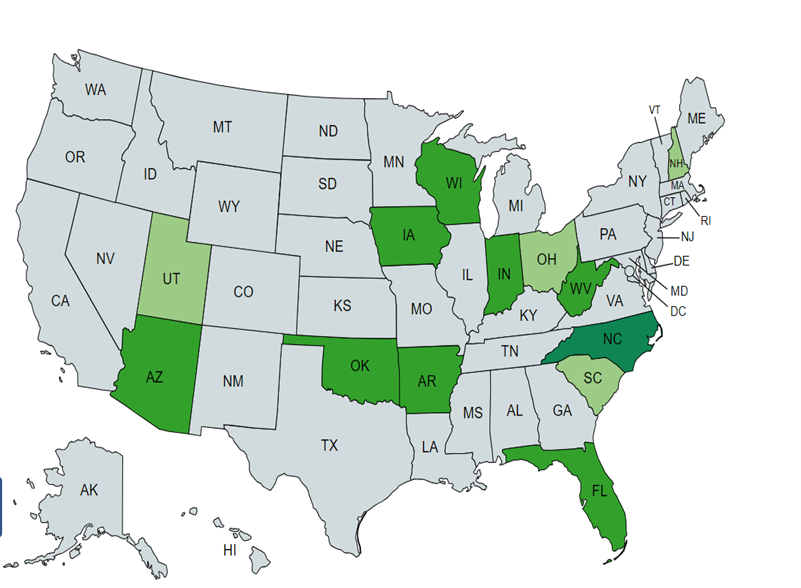
I’ve assigned light green to states without formula-funded programs or that give an absurdly low amount to some families as punishment for paying too many taxes (looking at you, Buckeyes). Before you pack your U-Haul, you should check into the details of programs.
Families have already begun to figure this out. Here is a picture of new construction four-bedroom two two-bath homes for sale in the eastern panhandle of West Virginia, where a rather vigorous new home construction boom is underway:
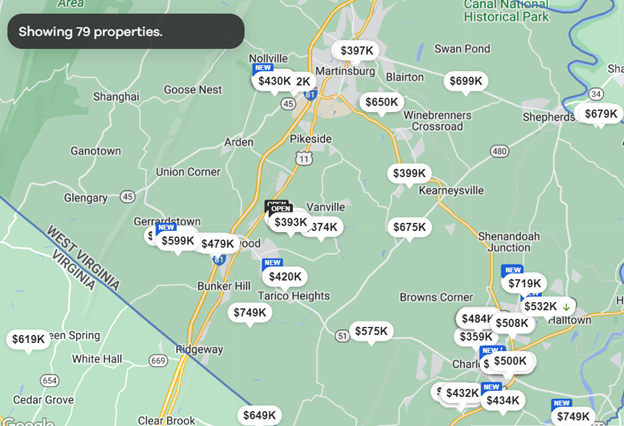
Here is the same picture for new-construction, four-bedroom, two-bath homes in Arlington, Virginia:
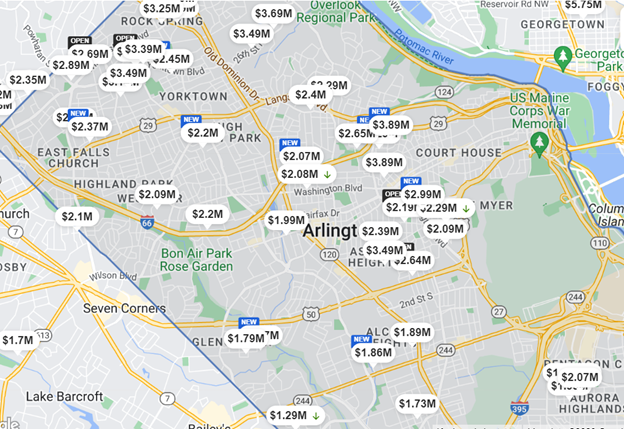
And so, what can you expect in return for your high level of debt from Arlington’s district schools? Unfortunately, academic gains below the national average:
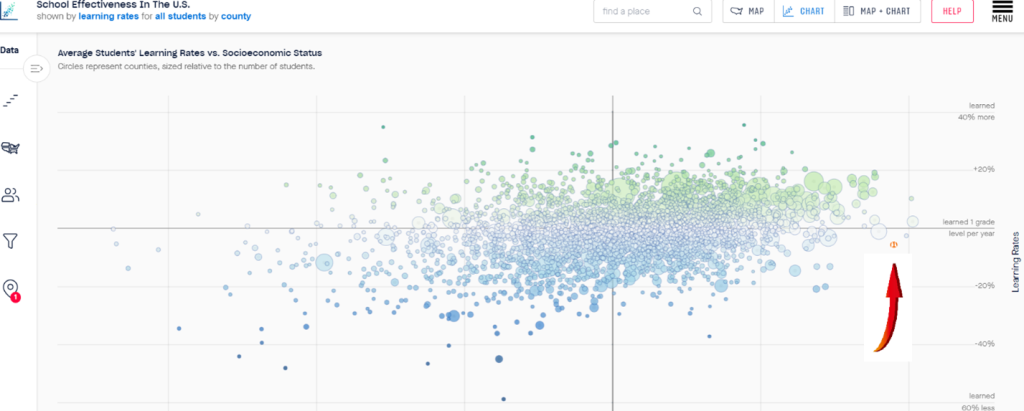
The housing construction boom in the eastern panhandle of West Virginia might just be getting warmed up. Given the rise of remote working, less debt-slavery housing prices and greater options, it’s not hard to figure out the demand.
Another interesting spot to keep an eye on long-term will be Texarkana. The Arkansas-Texas state line bisects Texarkana, and currently, most homes for sale are on the Texas sign of the line. However, one side of this border (Arkansas) has empowered parents, and the other side (Texas) has not (yet).
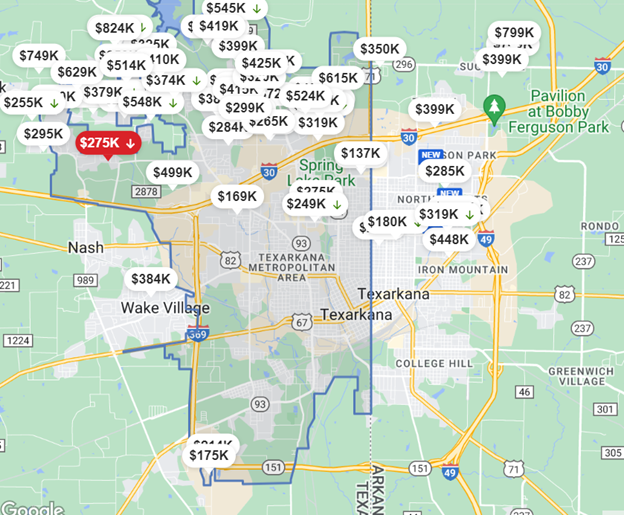
The competition among states is no longer exclusively about attracting employers; increasingly it is also about attracting workers. States focused on creating the highest possible return on investment for young families might melon-scoop them from their hidebound neighbors.

American scientist and futurist Roy Amara (on the left above) coined a phrase which came to be known as “Amara’s Law.” Amara’s Law holds that:
We tend to overestimate the effect of a technology in the short run and underestimate the effect in the long run.
Recently America’s financial journalist Jim Grant expressed a related notion on the Odd Lots podcast saying “The inevitable is always certain but not always punctual.”
Below is a back of the napkin estimate by your author on states that will be practicing “relatively robusto” private choice in 2024. By “relatively robusto” I mean “wow we would have been pleased as punch to see this mix of programs in a state in 2019.” This is not to say the mix of policies in these states is perfect, just relatively rubusto.
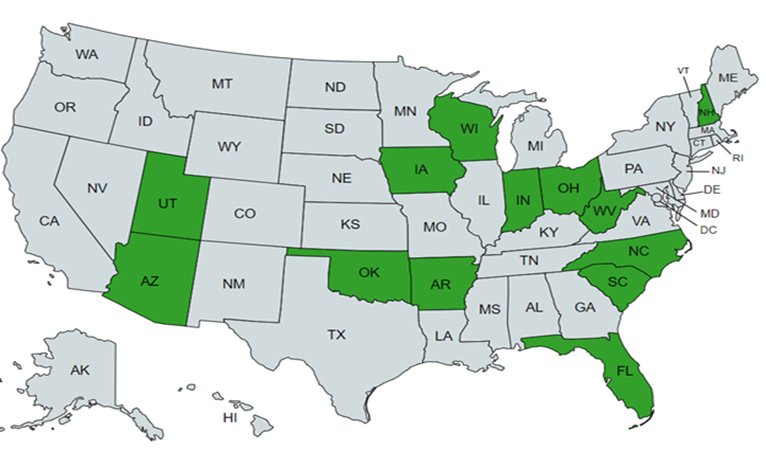
Texas may hold a special session on choice in the Fall of 2023 and could yet join in on the fun. What do the insights offered by Amara and Grant have to offer the choice community going forward?
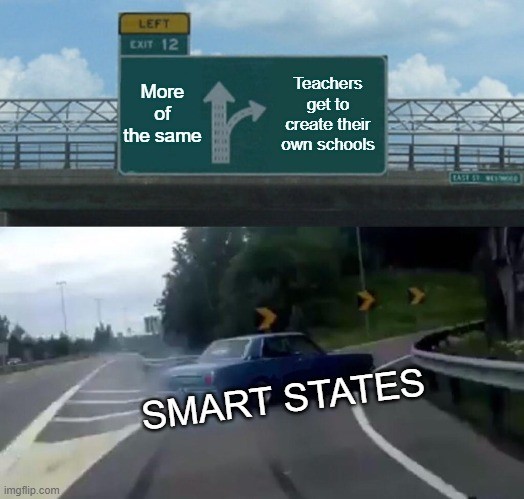
Amara’s law applies to the new choice programs: the K-12 world will not shift overnight in any of the states that have passed rubusto private choice. Adoption will be faster than in the past, but there will be no mad rush to enroll. Lawmakers will need to work kinks out of statutes, new K-12 space added over time, administrators will make mistakes and (sometimes) will even correct them.
Over time, empowering teachers to start their own schools, and giving families the opportunity to collectively decide which will thrive and close will have a profound impact; it is just not going to happen overnight.
Grant’s observation applies more to the ongoing decline in district schooling: the inevitability of this decline does not dictate the pace. The core problem of American public schooling, regulatory capture, has never been more obvious to a much broader universe of people and will not be exiting the scene during the lifetimes of anyone reading this today.
The horrific practice of killing whales for lamp oil went on for seven inexplicable decades after the first drilled well for “rock oil” gushed in Pennsylvania. Zip code assignment of students to
schools whose politics are under the heavy sway of unions will continue for a lamentably long time. The conclusion of this barbarism is inevitable, but it (sadly) will not be punctual.

SailFuture, a private high school, started as a mentoring program for at-risk youth by teaching them maritime skills through sailing adventures. It recently was named as one of 32 semifinalists for the $1 million Yass Prize to be awarded in December.
Consulting firm Tyton Partners, in collaboration with the Walton Family Foundation and Stand Together Trust, today released a new report, Choose to Learn 2022, that looks at data collected from more than 3,000 K-12 parents and more than 150 K-12 suppliers across all 50 states in the United States.
The report finds that 52% of parents now prefer to direct and curate their child’s education rather than rely on their local school system, and 79% of parents believe learning can and should happen everywhere as opposed to in school alone. Data shows that parents want experiences that make their child happy, above all else, by reflecting their child’s interests and providing individual academic support. However, despite all parents reporting similar goals for their children, regardless of demographics, the study reveals gaps in program participation across income and race. For example, children from underserved backgrounds are nearly two times less likely to participate in learning outside of school than their peers.
Choose to Learn 2022 explores the variety of K-12 options now available to families – inclusive of both in- and out-of-school educational offerings – and how this ecosystem can better reflect families’ broader aspirations for their children. The publication follows recent findings from Tyton Partners’ School Disrupted 2022 series, which highlighted the near 10-percent decline in district public school enrollment due to the lasting impact of the COVID-19 pandemic.
“In viewing K-12 through a broad lens, we set out to better understand the issues impacting every family, including more than forty million parents who send their children to public school,” according to Christian Lehr, Senior Principal at Tyton Partners and the lead author of Choose to Learn 2022. “Relative to issues of equity and access, our local public districts play a crucial role for K-12 families. At the same time, families crave a wide variety of learning experiences. It is in this spirit that we examined parents’ aspirations at the intersection of in- and out-of-school learning, and ask: How can the K-12 sector deliver a stronger union of academic, extracurricular, and personal outcomes for all families, regardless of life or economic circumstances?”
Based on these findings and more identified in this study, it is clear now more than ever that parents want an education centered on the needs of their child, yet there is continued work that needs to be done to bridge the gap between aspiration and reality. It is incumbent upon the K-12 system of policymakers, system leaders, and suppliers to introduce new experiences, choices, and outcomes into local school districts and catalyze the growth of programs outside of school and across all demographics.
Choose to Learn 2022 underscores the need for the K-12 system to move towards a more student-centric future and helps readers understand how to:
“We are honored to have the opportunity to drive this pivotal conversation forward, alongside our partners, the Walton Family Foundation and Stand Together Trust,” according to Adam Newman, Founder and Managing Partner at Tyton Partners. “There is a clear call for us to collectively build towards a more student-centered future in K-12 education.”
To view the findings and learn more about this study, download Choose to Learn 2022 on the Tyton Partners website.

From left, former Wisconsin House Speaker Scott Jensen, education choice pioneer Howard Fuller, and School Choice Wisconsin founder Susan Mitchell share the stage at a session during the American Federation for Children National Policy Summit Sept. 29-30 in Milwaukee.
Editor’s note: The American Federation for Children held its national policy summit Sept. 29-30, welcoming key figures in the education choice movement as well as policymakers intent on expanding education opportunities for families. AFC communications specialist, former Florida Tax Credit Scholarship recipient and reimaginED guest blogger Nathan Cunneen was there and shares his observations in this post.
MILWAUKEE – The future of the school choice movement must include the beneficiaries of school choice themselves. This is the core belief behind the American Federation for Children’s Future Leaders Fellowship Program, which helps school choice beneficiaries who have reached college age combine their powerful stories with political advocacy training to help them grow into powerful voices for school choice.
Fellows of the leadership program had the opportunity this past week to address the conference through a panel titled, “The Future of School Choice Advocacy.” It was our intent to share how school choice affected our lives and to offer a hopeful roadmap for further progress.
We explained how even the most eloquently presented education choice myths fall apart quickly when confronted with honest testimony from a confident, well-spoken young person who attributes part of his or her success to school choice.
Those who oppose education freedom do everything they can to keep the discourse focused on abstract principles like school funding, democracy, or “health and safety.” The Future Leaders Fellows make that impossible.
Gissell Vera, for example, explained how she came to the United State from Mexico in search of more life options through education. In her small village growing up, she was expected to do exactly what her mother had done – grow up, marry a fisherman and become a housewife.
Gissell knew she had so much more inside of her. She came to the United States, used the Milwaukee Parental Choice Program to obtain access to a private school, graduated as her high school’s valedictorian, and earned full-ride scholarships to Marquette and Georgetown. As Gissell explained to our crowd, none of this would have been possible without school choice.
Next, we discussed the rising importance of school choice in political campaigns.
Hera Varmah, from Florida, explained how she sees school choice as an up-and-coming tentpole voting topic.
“This is going to be a bigger and bigger issue,” she said. “I went to Florida A&M University, and everyone thought that Andrew Gillum was going to be governor a few years ago. But Ron DeSantis won, and the Wall Street Journal credits school choice moms as the reason. Politicians need to know that voters care about school choice.”
Lastly, we wanted to be sure to tie our panel into the overall theme of this year’s Summit.
The event celebrated 30 years of the Milwaukee Parental Choice Program, and the opening dinner was a dedication to the innovative and reform-minded leaders who helped create the nation’s first school choice program decades ago. Former Wisconsin House Speaker Scott Jensen, as well as education choice pioneer Howard Fuller, School Choice Wisconsin founder Susan Mitchell, and former Wisconsin Gov. Tommy Thompson regaled the crowd with stories from their perspective and detailed the political challenges of passing such a program.
Unbeknownst to our honorees, four Future Leaders Fellows who directly benefitted from the program were in the audience.
This was something we desperately wanted to incorporate into our panel. Our moderator, Walter Banks Jr., masterfully navigated the conversation toward this topic. He explained how this year’s legislative wins will directly affect more students like us. Then he asked some questions: After such an amazing year of school choice victories, can we still be hopeful for the future? What role do the Fellows have to play in that? Why are they so important?
He illuminated. AFC’s Future Leaders Fellowship program trains and empowers those who have benefited from school choice in the past so that they can advocate for it in the future. How fitting, I thought, that in Milwaukee, as we celebrate three decades of school choice champions, the next generation of advocates is sitting right here.
I took my chance to build on that:
“We’re so honored to be a part of this movement, which so powerfully stands up for families and started right here in Milwaukee. I think I speak for all our Fellows and for AFC staff when I say that our honorees last night started this movement, but we want to be a part of the group that finishes it. We want to be a part of the generation that completes this mission by finally giving all families the freedom to choose the best education for their student.”
This is a foundational component of our fellowship, and the root of out panel.
If it’s possible that a school choice beneficiary can grow up to become a school choice advocate, then we want these young people to know that what is possible is only limited by what they believe to be possible. With the power of our personal stories and strong support from the seasoned advocates in this space, we believe that universal school choice in America is something achievable in our lifetimes.
We want that vison to personify the “future” of school choice in America. We said so on stage.
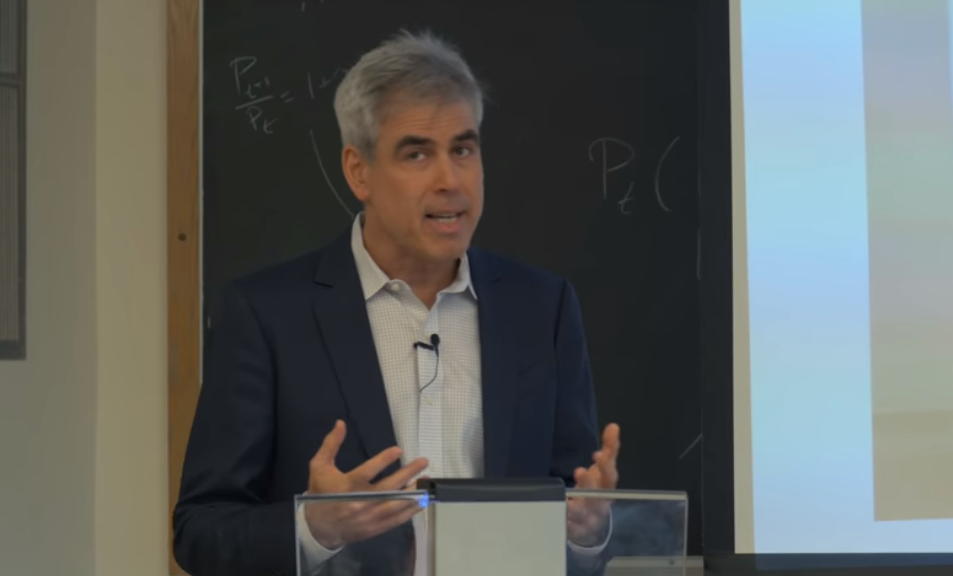
American social psychologist and professor of ethical leadership at New York University Stern School of Business Jonathan Haidt's main areas of study are the psychology of morality and moral emotions.
Jonathan Haidt’s book The Righteous Mind describes the human mind as an elephant (instinct) with a rider (reason). Crucial to this understanding is the insight that the rider serves the elephant.
Reason does not govern instinct; it serves it. The rider serves the elephant by seeking information that confirms pre-existing beliefs and avoids contradictory information. Individuals are thus not trustworthy to reason in support of their beliefs, but they are very adept at knocking down the theories of others.
If, however, you find yourself isolated in an ideologically homogeneous tribe, no one is likely to point out glaring flaws in your thinking; he or she either cannot or doesn’t want to see these flaws any more than you do. High quality reasoning, thus, is a social enterprise, and engagement with people of different points of view is crucial.
Examples of bad reasoning in education policy debates occur on a never-ending basis. Some of my personal favorites include: Florida’s literacy gains occurred because of Harry Potter books that, er, were available everywhere, including the states that didn’t see Florida’s gains.
Another classic: The American Legislative Exchange Council is a horrible threat to democracy despite, er, anyone can write model bills and only a tiny sliver of bills originate from ALEC.
Oh, and no list would be complete without the expressed notion that private schools are full of science-denying flat earther hillbillies except, well, private school students know more about science than public school students.
Haidt argues convincingly that people can talk themselves into pretty much anything, especially if they suffer from viewpoint isolation. “Donald Trump was a KGB agent” and “a bipartisan multi-state conspiracy threw the election to Joe Biden” are both deeply implausible stories, for instance, with distressingly large followings.
Having Trump supporters decamp to their own social media platform wasn’t healthy. Having three large firms execute their own conspiracy to shut this platform down was worse still. However antitrust authorities choose to view this action in America, Lopez Orbador, the president of Mexico, made it plain that overseas authorities will (appropriately) take a very dim view of a handful of tech CEOs in the United States creating a new “Holy Inquisition” of viewpoint censorship.
Pluralism, diversity, tolerance and a healthy dose of humility are ingredients we need more of in education, and more of in our society in general. Let’s put less stock in our certainty and more effort into a process of discovery.
 As the first full year of schooling during the coronavirus pandemic launches, a national education advocacy network is sounding the alarm in a research brief that America’s K-12 education system is in crisis.
As the first full year of schooling during the coronavirus pandemic launches, a national education advocacy network is sounding the alarm in a research brief that America’s K-12 education system is in crisis.
To ensure a more flexible, equitable and student-centered system of education both now and post-pandemic, the independent non-profit organization 50CAN is calling for a national response to that crisis, starting with a greater level of federal support for new learning modes to extend greater choice for families, including distance learning, homeschooling, and micro-schools and learning pods.
While schooling traditionally has been funded through a mix of local property taxes and state revenue with the federal government paying only about 10% of total costs, 50CAN observes, a greater level of federal support across these three modes of learning is needed.
Among 50CAN’s overall policy recommendations:
· All district, charter and private schools should receive emergency funding to support safely running in-person schooling this school year if they are able to do so and to provide a flexible, high-quality online schooling option for all students.
· Families should be able to easily move into or out of these in-person and online options as their health circumstances and risk factors change throughout the year.
· Families should have the option to enroll their student in an online district school program outside of their neighborhood boundaries or in an online charter school or private school program anywhere in the country with no restrictions to these online transfers, such as state enrollment caps.
· Families should receive funding to enroll their child in an in-person school in a neighboring district or in a charter school or private school if their district school does not offer an in-person option.
· Families up to 200% of the poverty line should receive a direct payment of $2,000 per child to pay for supplemental educational materials, tutoring, technology and other learning expenses, building upon payments -- $1,200 per adult and $500 per child – in the CARES Act.
The independent non-profit organization, launched in 2011, has a presence in eight states with affiliates in additional cities including Miami.
 Policymakers have a knack for finding private endeavors they presume still need fixing. The latest example? Learning pods.
Policymakers have a knack for finding private endeavors they presume still need fixing. The latest example? Learning pods.
With many schools closed to in-person instruction this fall, many parents have quickly adapted, developing the pods to continue their children’s education. Now policymakers are catching up with rules and regulations.
Learning pods are loosely defined as small groups of children who gather in a parent’s home for K-12 instruction. If this sounds like homeschooling, that’s because homeschool co-op arrangements like this have existed for decades, allowing parents to hire teachers or share their own subject matter expertise with groups of children who are not attending a public or private school full time.
In the pandemic, these pods are attracting families that had not considered educating their child at home before but are doing so now because of dissatisfaction with district online learning platforms. Parents have reason to be skeptical of district offerings this fall: District e-learning systems crashed or otherwise malfunctioned at the beginning of the new school year in Hartford, Houston, Virginia Beach, Philadelphia, across North Carolina, and during a practice session for families in Seattle.
At a Detroit school, a teacher expecting 14 students to attend online only had one student login, and his headphones were not working.
Carrie Limpert-Bostrom, a Minnesota parent, said in an interview, “You are able to fit it [a pod] to your specific needs. In our case, we wanted somebody who could speak French and speak to our children.”
She says she does not blame her school district because information regarding the pandemic is changing all the time. But, she says, “I knew I wanted something as stable as possible for my child,” adding, “I’m taking control of my daughter’s education during this time.”
Yet in some states, the question of who, in reality, is in control is one for the bureaucrats.
In Pennsylvania, state officials issued regulations stating that families involved in pods with six or more children must "notify" a state agency. While the groups do not need to be licensed, pod families must have evacuation plans in case of an emergency, as first reported by Reason, as well as create their own “health and safety plans.”
South Carolina officials are requiring that pod families serving more than six children apply for a family childcare home license. According to Charleston media, “local zoning regulations could limit that number further.” These reports also say at-home visits will be required. By the end of August, Connecticut companies helping parents form pods area ware of the potential for regulations (with the state department of education having released guidance for at-home learning) and have already scheduled “inspections” for homes hosting pods in West Hartford and Ellington (located north of Hartford).
In Oregon, where lawmakers blocked virtual charter school enrollment at the beginning of the pandemic, officials said they may regulate pod families in the same way as childcare providers. Such restrictions would include requiring background checks, CPR training and safe sleep training.
Governors in Colorado and Massachusetts have announced waivers for traditional childcare regulations to allow the formation of pods, but these executive orders still limit the size of each pod. The Massachusetts waiver will help organizations offering after-school programs, but parents are prohibited from paying each other for either their time or the use of a home.
Many state legislators will not return to session until the beginning of next year. This fall, state agencies should not be allowed to apply restrictions on learning pods — including in-home visits. Governors should look for ways to waive regulations and licensure requirements that would limit parent attempts to provide an education for their children. Public and private school educators can determine ways of measuring student progress if students choose to return to schools, but policymakers should not regulate pods like daycare centers in the meantime.
Next year, state lawmakers can align state policies on homeschooling, private schools, and other private learning options such as education savings accounts or K-12 private school scholarships with pods and micro-schools so that parents can make informed choices about the best learning option for their child.
Until then, parents should be encouraged to customize their child’s learning experience while district plans remain in flux.